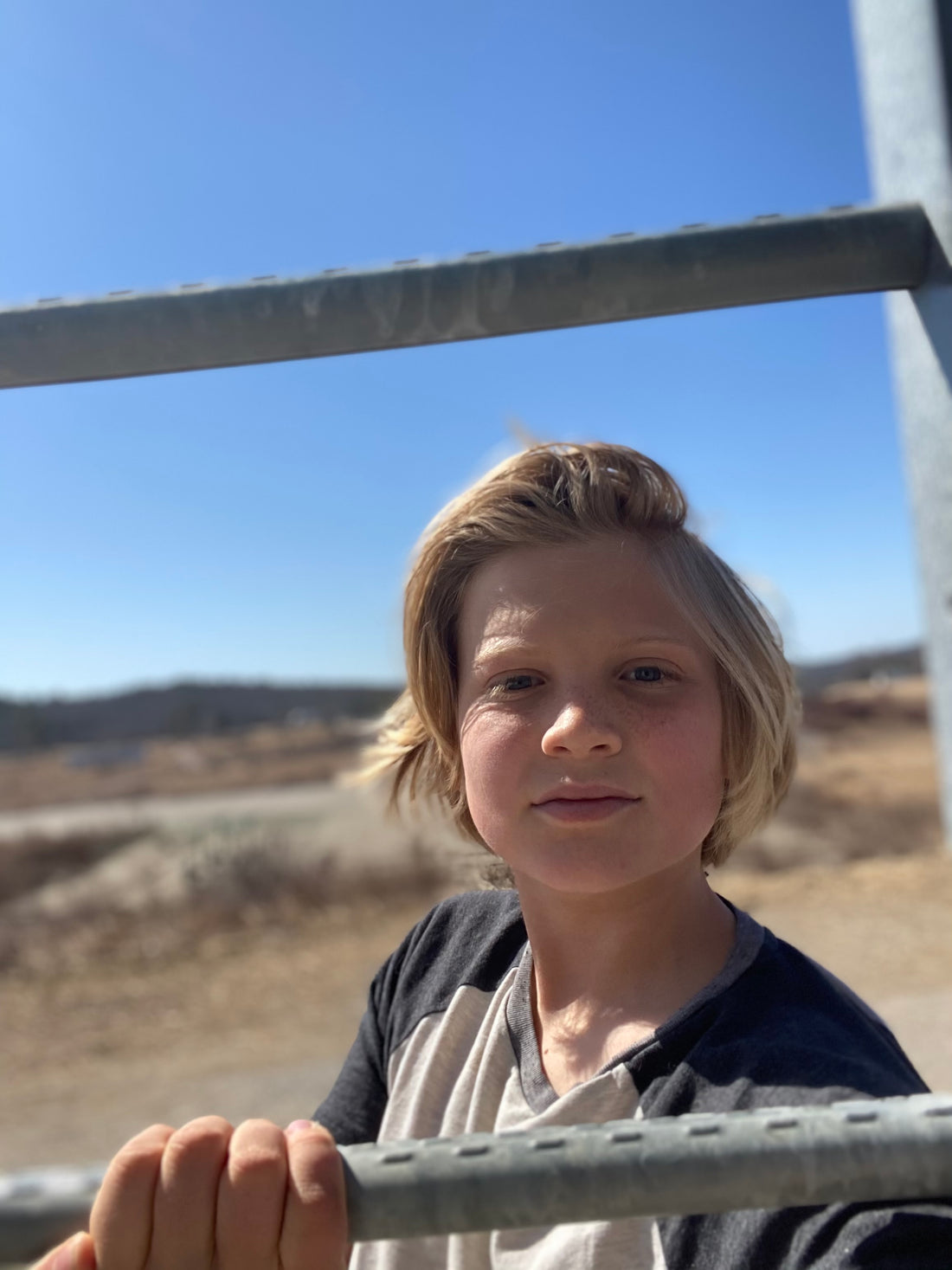Today's post is written by a guest blogger, our 13 year old son Noah. He had to research and write an opinion piece for school, and the topic he chose was Regenerative Agriculture. I'm sure it helps that his parents talk about it all the time, but the work that went into it is all his own.
We are sharing this to point out that while ecological systems are complex, the solutions are simple. We can't wait for the next generation to change the world. An old dog can learn new tricks, and the more adults that are educated and care about healthy soil, the more progress we can make to create better systems of farming and food. It isn't enough to tell children that they will be the ones to inherit all the problems so they need to step up and become leaders. Adults need to lead the charge now, and not hope that today's youth will fix it one day. As a mom, I know I'm not the only one who wonders what we will leave behind for our kids. Let's start making changes now. Education about soil health is an important step.
Thanks for listening,
Holly Arbuckle
Noah's unedited guest blogger post is below:
-----------------------------------------------------------------
There’s a monster attacking our planet. A monster that is creating freak weather events, causing species to go extinct, and warming our planet. Like a science fiction beast, this monster was created by humans, propelled by greed in processes unnatural to nature. This monster is climate change, and the best shot we have to reclaim our planet is to revert it to the way nature intended. A good place to start is with agriculture- creating a healthier environment, more profitable farmers, and healthier food.
Our modern practices in agriculture are by and large degenerative, and have been since the dawn of agriculture 12,000 years ago. Regenerative agriculture mimics natural cycles where plants and animals work together in harmony. The conventional system has two major problems: excessive tillage and overuse of chemicals. Tillage is the process of digging up the top soil to plant seeds and the alternative to this is using a no-till drill, which creates a thin line in the dirt, drops in the seed, and then covers it back up to minimize disturbance.
Tillage wounds the soil, killing many of the microorganisms while releasing stored carbon. When this carbon is released into the atmosphere, it becomes CO2, which contributes to warming the planet. Even without regenerative agriculture being used, soil still holds more carbon than all plant life and atmospheric carbon combined, and it can hold so much more.
To farm this way can seem to be an almost unattainable goal, but Gabe Brown's five principles of regenerative agriculture explain the five pillars of what it means to farm regeneratively. First is to limit the amount of disturbance caused to the soil not just through not using chemicals, but also by not tilling the ground and destroying the microbiome. There are more living organisms in one teaspoon of soil than there are humans on earth. Most people don’t realize that tillage is the fastest way to kill microorganisms in the soil. Second is to always cover the ground, giving it a sheet of armor to protect the soil from erosion caused by water and wind. Third is to encourage a diversity of plants and animals. There are no monocultures in nature. Fourth is to have roots that are alive as long as possible, to feed the soil and keep the microbiome alive.
Fifth and finally, is to integrate animals into the ecosystem. Going back to the point of diversity not only farm animals should be incorporated into the ecosystem. In regenerative agriculture an environment for many species to live in harmony should be created. These principles helped transform Gabe Brown’s farm from an unprofitable situation with low quality soil, to a profitable and healthy farm.
One of the primary benefits of regenerative agriculture is the ability of healthy soil to sequester carbon. The goal is to pull carbon dioxide out of the atmosphere (where it warms the planet) and put it in the ground in the form of organic matter (where it doesn’t.) During photosynthesis, carbon dioxide is pulled out of the atmosphere and turned into sugar. Some of that sugar is used by the plant, but 30-80% of it is sent into the ground, where it feeds the microbiome of the soil. This process builds organic matter, which can help store carbon underground.
The benefits of farming regeneratively don’t stop at carbon sequestration, though. Regenerative agriculture also produces healthier food than conventionally produced crops and animals. Remember how the plants give 30-80% of their sugar to the microbiomes in the soil? Well, they don’t give away the sugar out of the charity of their hearts. In return for the sugar, the microorganisms give the plants nutrients and minerals, creating a healthier plant for both humans and animals to eat. Nutrient and mineral-rich food is inherently better for human health, but currently many people aren’t getting the necessary nutrients they need because of the way their food is grown.
One of the most immediate and obvious benefits of creating a regenerative agriculture system is how it can dramatically decrease floods and droughts. When soil is tilled it can become compacted over time. As the living organisms die, the soil loses structure and can develop a crust on the surface. This means that when it rains on the soil, the water just rolls off as if it was asphalt, which contributes to flooding. In 2012 this vicious cycle cost the agriculture sector $30 billion alone, and that doesn’t count all the other buildings and assets destroyed
iby these floods. When regenerative farming is used, healthy soil acts as a sponge, absorbing water from rain and slowly giving it to the plants allowing for a properly functioning ecosystem. For example, for every one percent increase in soil organic matter, stores an extra 20,000 gallons of water per acre on average. This stored water beneath the ground can help prevent drought when it doesn’t rain.
We now have our secret weapon to defeat the monster. Something that was here all along, and is the polar opposite of the enemy: climate change. Our hero is nature itself. By applying these principles and returning to the way the world used to function before humans started laying waste to the cycle of ecosystems, we can fix many of the problems caused by conventional agriculture. Regenerative agriculture is the ultimate solution, not just to combat climate change, but also to provide healthier food, mitigate flooding, and so much more.

